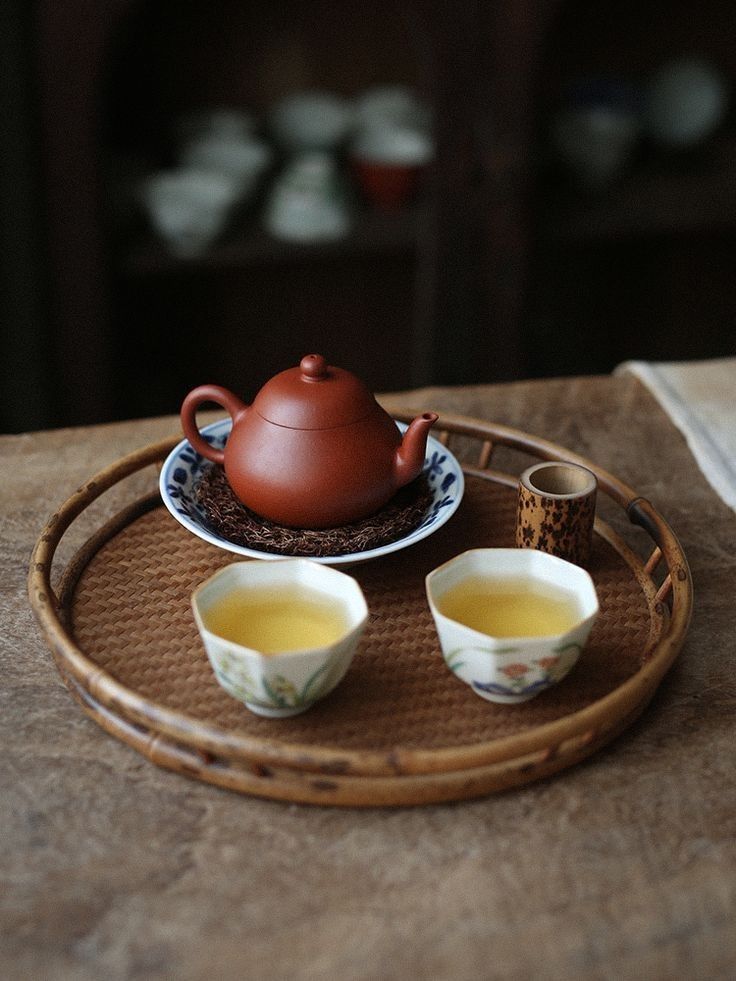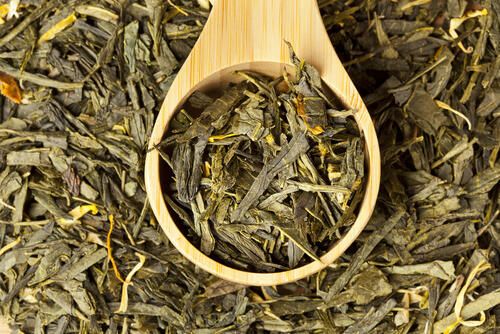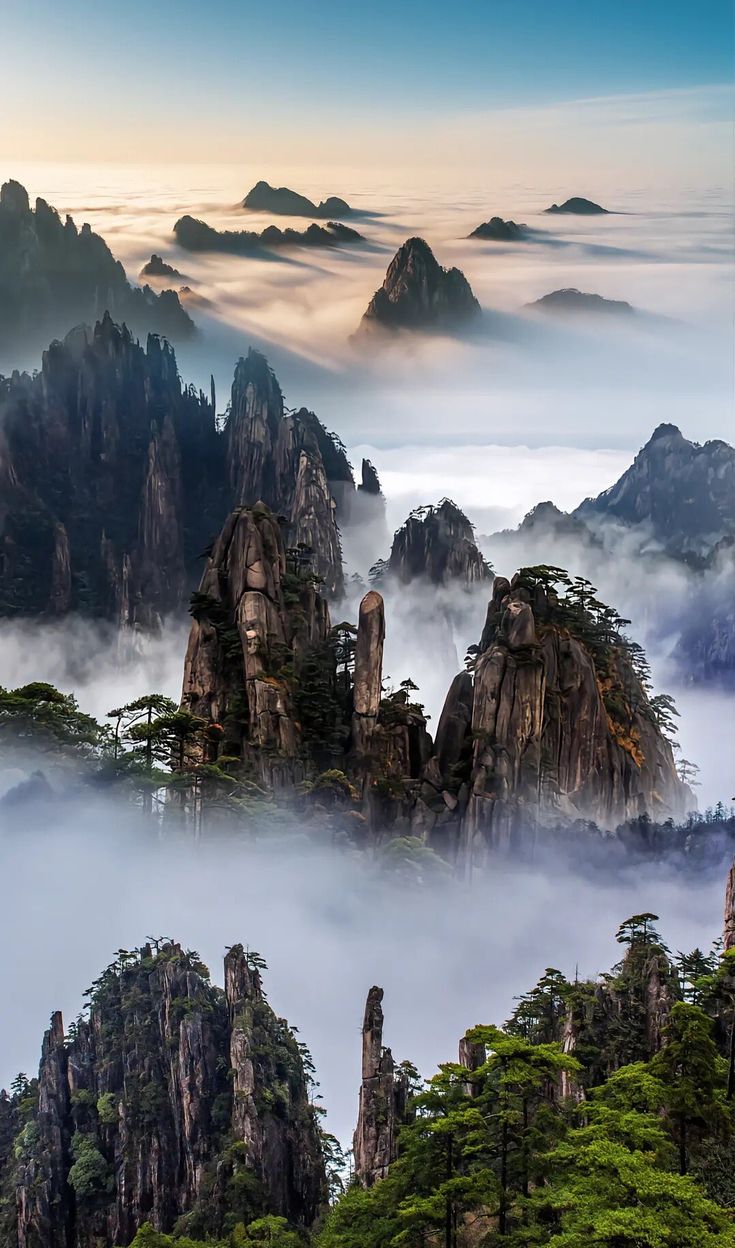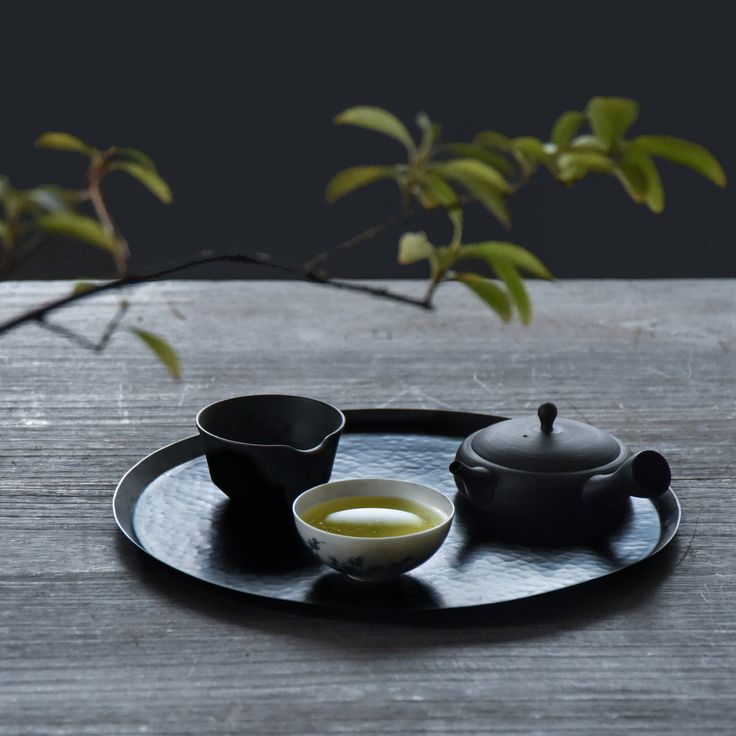Huangshan tea in the Ming Dynasty not only in the production process greatly improved, the variety is also increased, and at that time the Huangshan tea had unique characteristics, and reputation, The Huangshan Maofeng tea prototype was also basically formed.
In the first year of Guangxu in the Qing Dynasty (1875), Xie Zheng'an, who was from Caoxi, Huizhou, founded the ‘Xie Yu Da Tea Company’ in the area. With many years of experience in planting, picking and making tea, he led his family to pick the young tea buds and leaves before and after the Qingming Festival and then processed them with a set of techniques to make new tea that resembled a bird's beak, with a clear soup colour and refreshing flavour. The tea was named ‘Mao Feng’ because of its ‘white hairs and peak-like buds’. Mao Feng tea to Shanghai, which was praised by the British tea merchants in China at the time, not only Shanghai, and exported to the United Kingdom, renowned in Europe. Later, the planting of Mao Feng was extended to the entire Huangshan Mountain in the north and south, and the tea produced was renamed as ‘Huangshan Mao Feng’ accordingly.

After 1949, Huangshan Maofeng has been used as a gift tea for state guests in China's foreign affairs activities.
Since the reform and opening up, Xie Zheng'an's grandson inherited the ancestral business and established Caoxi Tea Factory in Caoxi, the birthplace of Huangshan Maofeng, in 1993, registered the trademark of ‘Caoxi’ in 1995, and obtained the certification of the registration of the mark of origin in 2002.
Technological Characteristics
Huangshan Maofeng tea is plucked from the young tea buds before and after the Qingming Festival, and then carefully processed with a set of techniques, such as ‘frying in the pot (killing the green), lightly rolling (kneading), roasting the raw blanks (gross fire), and then covering with round bumps and baking them again in the old oven (full fire)’, so as to make the new tea which is shaped like a sparrow's beak, with a clear colour of the soup, and a refreshing flavour.
Huangshan Mao Feng is shaped like a sparrow's tongue, even and strong, with peaks showing hair exposed, the colour is like ivory, the fish leaves are golden; the fragrance is high and long, the soup is clear, the taste is fresh and strong, mellow and sweet, the leaf bottom is tender and yellow, and the leaf is fat and strong into a flower. Among them, ‘golden yellow slice’ and ‘ivory colour’ are the two obvious features that make the appearance of Premium Huangshan Maofeng different from other Maofengs.
Process

Picking Process
(1)Picking Standard
Special grade Huangshan Maofeng tea is picked before and after the Qingming Festival, while grade 1-3 Huangshan Maofeng tea is picked before and after the rainy season. Different grades of Huangshan Maofeng tea have different picking standards. Special grade Huangshan Maofeng tea picking standards for a bud of one leaf at the beginning of development; 1 grade Huangshan Maofeng tea picking standards for a bud of one leaf, a bud of two leaves at the beginning of development; 2 grade picking standards for a bud of one, two leaves at the beginning of development; 3 grade picking standards for a bud of two, three leaves at the beginning of development.
(2) Picking Methods
Huangshan Maofeng tea in addition to picking according to the appropriate level of picking standards, but also should take a scientific and reasonable picking methods, to ‘stay fish leaf picking’ as the main. The so-called fish leaves, refers to the tea tree new slightly elongated early expansion of the transitional leaves, stay fish leaf picking is also a minimum of tea tree picking leaves. Each batch of plucked fresh leaves require tenderness, uniformity and purity is basically the same. Picking Huangshan Maofeng tea, but also consider the growth rate of the tea tree new slightly, do not pick all at once. Generally after mining, every 3 to 5 days picking 1 batch, generally throughout the spring in 4 to 6 batches of picking. The picked tea leaves should be packed in bamboo baskets with good air permeability, and transported to the factory in time to prevent heat and redness.
Grading of Fresh Leaves
Picked back to the fresh leaves, the first to pick, remove frostbitten leaves and pests and diseases, pick out the leaves, stalks and tea fruits that do not meet the standard requirements to ensure that the quality of the buds and leaves uniformly clean. Then according to the tenderness, uniformity and freshness of the corresponding rating, and then in accordance with the grade, moisture content and picking time of different piles. If not strictly in accordance with the requirements of the pile, the old and young different fresh leaves mixed together, not only affect the later processing of tea, but also reduce the quality of the finished tea. The grading of the fresh leaves to the pile in the bamboo soft plaque drying, in order to lose some of the water. Drying time is generally 6 to 8 hours, the thickness of the leaves is 10 to 15 cm. When the fresh leaves become soft and fragrant, they can be processed in time. In order to preserve the quality and freshness, Huangshan Maofeng tea is required to be picked in the morning and made in the afternoon; picked in the afternoon and made in night.
Handmade process
(1) Killing
Killing is the first process of Huangshan Maofeng tea processing, which can make the tea leaves to maintain the inherent green colour and ensure that the Huangshan Maofeng tea soup has clear leaf green key. Huangshan Maofeng tea greening generally uses a diameter of 50 cm or so of the barrel pot, greening to take smothering, shaking combination. First about 500 grams of fresh leaves evenly spread on the bottom of the pot, the use of 150 ℃ smothering for about 2 minutes, as far as possible to emit water vapour in the fresh leaves. If a large number of water vapour overflows from the mouth of the pot, the use of 130 ℃ pot temperature stir-fry to kill. Stir-frying, with the palm of the hand, repeatedly push the green leaves from one side of the pot to the diagonal side, as far as possible, shake loose, and raise the green leaves, so that they are away from the surface of the pot of 20 cm or so, to ensure that the green leaves are heated evenly. Pay attention to the hand gestures should be light, fast, and not too heavy, to avoid squeezing out the tea juice and leading to the dark colour of the tea leaves. Generally 50 to 60 times per minute stir-frying. Huangshan Maofeng tea kills the degree of greening, and generally kills the green leaf
(2) Twisting
After killing the green leaves in the pot, put the green leaves in the dustpan to spread out, turn evenly, and then gently raise the hand a few times, and then stir fully, so that the heat inside the green leaves dissipate, and then pour the green leaves into the colander. Use both hands to hold down the greening leaves and knead them gently for 1~2 minutes repeatedly to make the greening leaves curl into strips. When kneading, the speed should be slow, and not too hard, pay attention to kneading and shaking at the same time, in order to maintain the integrity of the buds and leaves. Kneading is the shaping process in the initial production of Huangshan Maofeng tea, through the kneading of Maofeng tea to form a tight, curved shape. At the same time, kneading also has a certain effect on the improvement of the inner texture of the tea leaves, after the fried green leaves are squeezed, some of the leaf cells of the tea leaves will be gradually twisted and ruptured, and ooze out the tea juice adhering to the surface of the kneading leaves, which can increase the adhesion of the tea leaves. [5]
(3) Roasting
The baking of Huangshan Maofeng tea is carried out using a baking cage, which consists of a baking top and a baking ring, and is made of bamboo splints. After kneading, a charcoal fire is placed under the baking ring and the baking top is covered. In order to prevent the smell of smoke affecting the quality of tea, to wait for the top of the cage no longer smoke out before putting on the green leaves. The green leaves by 0.5 ~ 1.5 cm thickness spread on the drying top, and then constantly check the degree of drying of green leaves, generally drying to tea moisture content of 4% ~ 6% can be baked. After drying and baking, the tea leaves should be picked out and put into the iron cylinder while it is hot, and can be marketed after being sealed with the lid.
Inheritance value
Huangshan Mao Feng is one of the top ten famous teas in China, produced in Huangshan. Huangshan Mao Feng has a beautiful appearance, each piece of tea about half an inch, slightly yellowish green, oily and glossy colour, sharp buds nestled in the leaf, like a bird's tongue, the whole body is covered with white fluffy hairs, is the successive emperors named to be the Tribute Tea.
Inheritance status

In recent years, the local government on the development of Huangshan Maofeng insufficient investment, brand publicity is not enough, resulting in Huangshan Maofeng tea prices downward. Driven by comparative interests, some local tea farmers, tea enterprises in the production of Mount Huangshan Maofeng less investment, many fresh leaves to do other famous tea, leading to an increase in the market of counterfeit tea, and Mount Huangshan Maofeng tea production, quality decline, and even a few areas of Mount Huangshan Maofeng tea production shrinkage phenomenon.
Inheritance character
Xie forty, male, born in October 1956, the third batch of national intangible cultural heritage project representative inheritor. Declared area: Huizhou District, Huangshan City, Anhui Province, project name: green tea production techniques (Huangshan Maofeng).
Protection Measures
On 12 November 2019, the List of Representative Project Protection Units of National Intangible Cultural Heritage was announced, and Xie Yuda Tea Industry Co., Ltd. was granted the qualification of the project protection unit of ‘Green Tea Production Technique (Huangshan Maofeng)’.
On 31 October 2023, the List of Representative Projects Protection Units of National Intangible Cultural Heritage was announced, and Xie Yuda Tea Company Limited, the protection unit of the project of Green Tea Production Technique (Huangshan Maofeng), was qualified for assessment.

